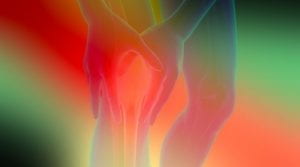Red, Green, Yellow: Translating Pain with Colors
by Skandan Ananthasekar
It was like an arrow. Sharp, shooting, and sudden. A flash of red, blinding and ephemeral. Yet, what was the cause? Understanding pain can be problematic. Especially when expressed in metaphors of war and damage.[1] Metaphors are intricately linked to meaning. Therefore, language that describes pain in terms of disability and disorder can further perpetuate the problem.[2] The disability label can also rob the patient of their identity, especially with those suffering from chronic pain.[3] Metaphors can also obscure nuance and complexity by reducing concepts to their basest form. Pain, however, is deeply complex and needs to be contextualized.
In the 17th century, Rene Descartes developed a theory of pain that was heavily grounded in metaphors.[4] Descartes delineated between the body and the soul, localizing pain perception to the soul. Descartes described pain as being conducted along a single line from the site of injury to the brain. The two were connected by “hollow tubules” through which animal spirits would flow into the muscles to allow them to contract. In order to explain this connection, Descartes described the human body as a machine and said that pain traveled “just as, pulling on one end of a cord, one simultaneously rings a bell which hangs at the opposite cord.”[5]
Despite problems in using metaphors to understand pain, they can serve to be useful tools. The difficulty of expressing pain naturally leads to the use of metaphors to allow others to understand a deeply individualized and subjective experience. As a result, metaphors that describe pain can allow others to empathize with your pain. This dichotomy between the destructiveness and usefulness of metaphors in describing pain necessitates the use of metaphors that are more nuanced and contextualized. Perhaps, colors can be used to understand pain in a way that words fail to do?
Photo and audio file are labeled as “colored knee pain.”
References
- Benini, A., and J. A. DeLeo. 1999. “René Descartes’ Physiology of Pain.” Spine 24 (20): 2115–19. https://doi.org/10.1097/00007632-199910150-00010.
- David Seminowicz, Amanda Pustilnik, M. K. Gioioso, Jennifer Chandler, Robert Dinerstein, Jennifer A. Haythornthwaite, & Tor D. Wager. 2015. Panel 3: Chronic Pain, “Psychogenic” Pain, and Emotion, 18 J. Health Care L. & Pol’y 275. Available at: http://digitalcommons.law.umaryland.edu/jhclp/vol18/iss2/5.
- Neilson, Shane. 2016. “Pain as Metaphor: Metaphor and Medicine.” Medical Humanities42 (1): 3–10. https://doi.org/10.1136/medhum-2015-010672.
- Scarry, Elaine. 1985. The Body in Pain: The Making and Unmaking of the World. New York: Oxford University Press.
NOTES
[1] Scarry, Elaine. 1985. The Body in Pain: The Making and Unmaking of the World. New York: Oxford University Press.
[2] Neilson, Shane. 2016. “Pain as Metaphor: Metaphor and Medicine.” Medical Humanities 42 (1): 3–10. https://doi.org/10.1136/medhum-2015-010672.
[3] Seminowicz, David, et al. 2015. 2015. Panel 3: Chronic Pain, “Psychogenic” Pain, and Emotion, 18 J. Health Care L. & Pol’y 275. Available at: http://digitalcommons.law.umaryland.edu/jhclp/vol18/iss2/5.
[4] Neilson, Shane. “Pain as Metaphor: Metaphor and Medicine.”
[5] Benini, A., and J. A. DeLeo. 1999. “René Descartes’ Physiology of Pain.” Spine 24 (20): 2115–19. https://doi.org/10.1097/00007632-199910150-00010.

